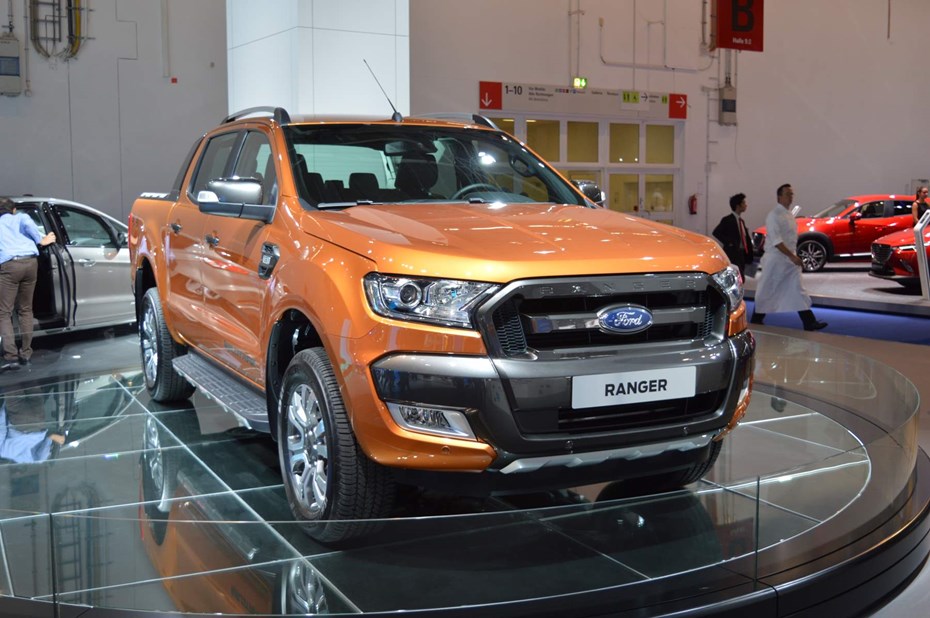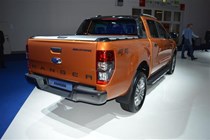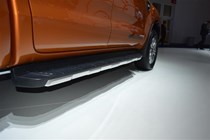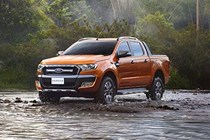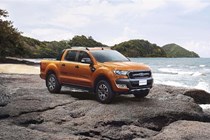The long awaited unveil of the 2015 Ford Ranger took place at the Frankfurt Motor Show, and is due to hit UK dealerships in early 2016. Parkers Vans was at the show in central Germany, and managed to speak with the chief designer, Craig Metros, about the facelift and changes to the interior.
Originally launched in 2012, the current generation was the first Ford Ranger to be developed by Ford; previous models were badged-engineered versions of the Mazda B-Series. With the next 18 months set to welcome the replacement of older models and the introduction of new manufacturers to the pickup market, Ford has decided to refresh its product (See New Pickups for 2015 and 2016).
New face of the Ford Ranger
The soft and smiley face of the Ford Ranger has been replaced by a meaner and tougher look but as the Chief Designer explains, it was a challenge to balance the regional tastes while also encompassing the brand features.
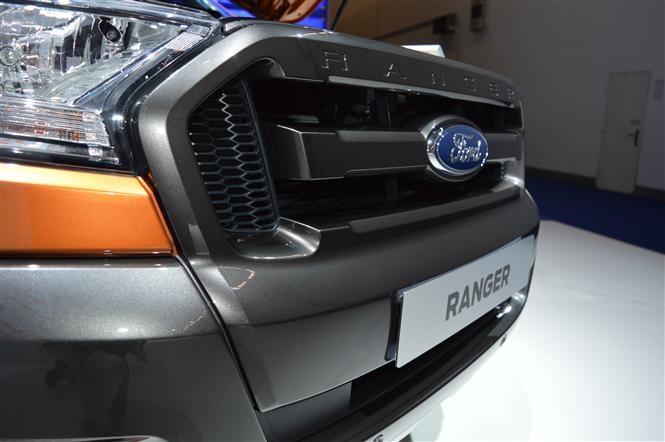
“We’re going to facing some stiff competition in this segment over the next couple of years, and the Ranger needed to be facelifted if it wanted to stay on top of the market”, explained Craig Metros, Chief Designer and Ford Motor Company.
“This was never going to be an easy task because the Ford Ranger is a global product, and different regions embrace different designs. One thing that everyone wanted, though, was conviction; it needed to be a tough-looking product”.
“We achieved this by giving it a similar thick three bar grille as the Ford F150 and compressing the lights to give a mean look. In addition to this, the grille had to be hexagonal to reflect the rest of the Ford CV line-up and still be aerodynamic to improve fuel economy”.
Interior upgrade
On the inside, the Ford Ranger has also experienced a makeover. The chunky ‘G-Watch’ inspired dashboard buttons of the previous generation have been replaced by a more subtle design, which we found to be quite lacklustre and uninspiring, especially when considering that it’s the top spec model.
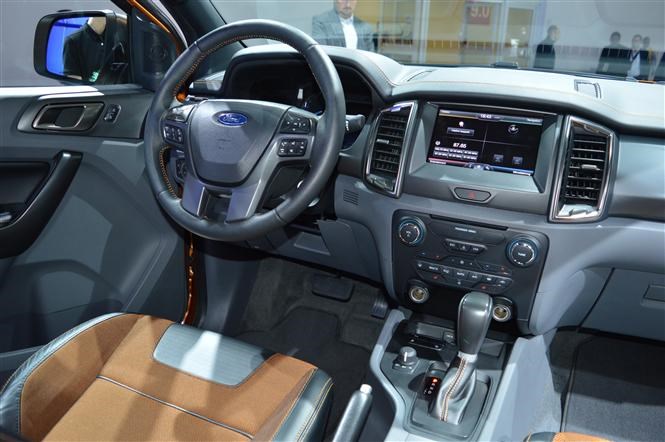
The buttons are smaller and the controls for the air conditioning unit are located further down the dashboard, which means they’re a little trickier to reach. On the display Wildtrak model there were four colour schemes (dark grey, light grey, chrome and orange stitching) and they didn’t particularly complement each other.
In terms of style, we rated the interior of the new Nissan NP300 Navara ahead of the Ranger but, as expected, there is a host of new technologies that keeps the Ford Ranger in contention. These include the second generation SYNC connectivity system (SYNC 2) and an 8-inch touchscreen display.
Lane Keeping Alert and Lane Keeping Aid help inform and correct the driver if the vehicle strays from their lane while Adaptive Cruise Control with Forward Alert means the driver just has to worry about the steering on the long runs.
These are complemented by front and rear park assist, which can be used for both bay and parallel parking, and a rear view camera. Accident prevention systems include the standard Electronic Stability Control, Rollover Mitigation (detects if the vehicle is likely to tip over, and brakes accordingly) and trailer sway control (brakes and decelerates to regain control of an unstable trailer).
An array of driver assistance technologies deliver greater comfort and convenience, including Lane Keeping Alert and Lane Keeping Aid, Adaptive Cruise Control with Forward Alert, Front and Rear Park Assist, Rear View Camera, and a standard Electronic Stability Control system with rollover mitigation and trailer sway control.
Also new are the dual information screens either side of the speedometer in the instrument panel and a 240v charging socket for laptops, tablets and phones.
New power rating
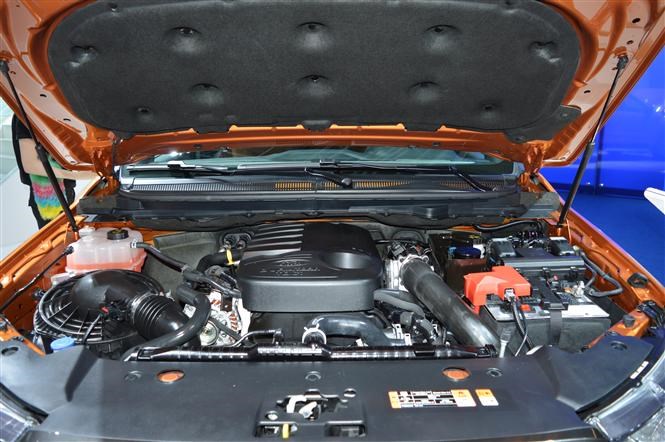
The Ford Ranger replaces the 123bhp and 148bhp power ratings on the 2.2-litre but keeps the 198bhp on the 3.2-litre. The 2.2-litre will now be offered in a 158bhp form, which will achieve 43.5mpg on the combined cycle and 171g/km CO2 emissions for reduced running costs.
Same underpinnings
Apart from the new face, changes to the interior and the new fuel-efficient 158bhp power rating on the 2.2-litre engine, very little has changed on the Ford Ranger. The Ranger will still be available in single, extended and double cab form, and it keeps the class leading 3.5t towing capacity on the 4×4 models (2.2 tonnes on 4×2 models).
The electronic 4wd system has three settings; 2wd high range, 4wd high range and 4wd low range with locking differential, but the vehicle has to be stationary when changing between the different modes, unlike the 2015 Mitsubishi L200.
Wading depth remains at 800mm and the approach and departure angles at a fairly sub-standard 29 and 20-degrees respectively.
Pricing and Availability
Although prices and specifications have yet to be announced, we doubt that the prices will differ much from the current scheme (£16,109 to £26,626 plus VAT). The Ford Ranger will go into production this month with the first models arriving in the UK in around January 2016.



